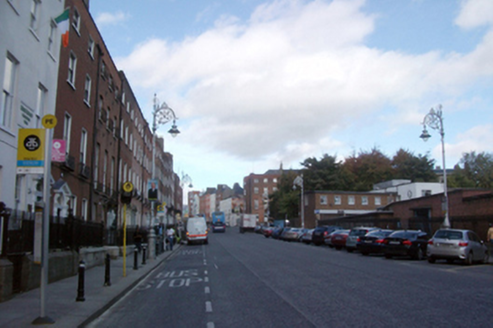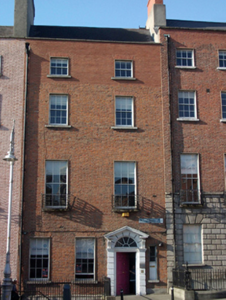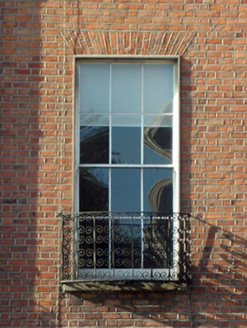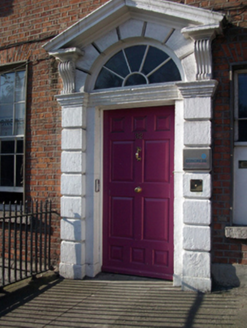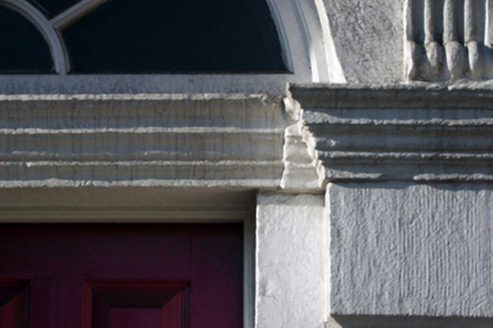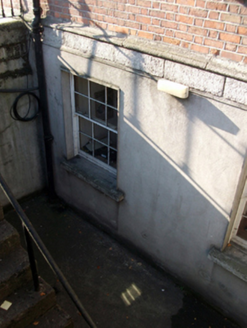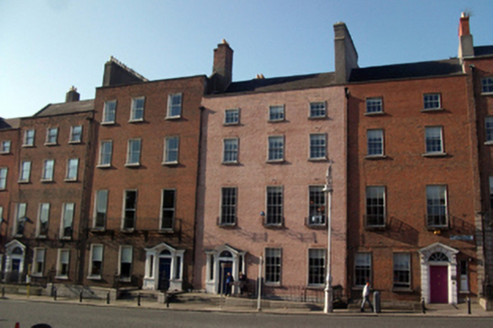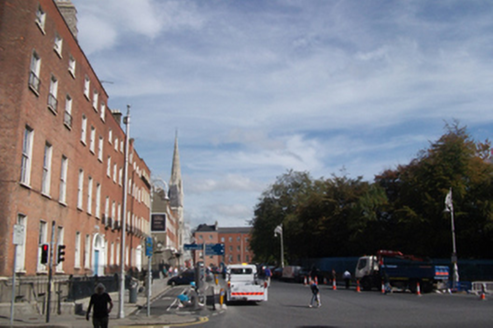Survey Data
Reg No
50010647
Rating
Regional
Categories of Special Interest
Architectural, Artistic
Original Use
House
In Use As
Office
Date
1755 - 1760
Coordinates
315541, 235061
Date Recorded
28/09/2011
Date Updated
--/--/--
Description
Terraced four-storey house over exposed basement, built c.1758, having three-bay ground floor and two-bay upper floors. Now in use as offices. Pitched artificial slate roof with clay ridge tiles having hip to rear, behind rebuilt red brick parapet wall with squared concrete coping. Full-depth rendered chimneystack to party wall, shared with No. 33. Red brick rendered and stepped chimneystack with clay pots to party wall, shared with No. 31. Flemish bond red brick walls with moulded granite plinth course and granite ashlar platband over rendered walls to basement level. Top floor rebuilt in header bond c.1980. Rendered wall to rear elevation. Gauged red brick flat-arched window openings with raised rendered reveals and granite sills. Six-over-six pane timber sliding sash windows to basement, ground, first and second floors, three-over-three pane to top floor. Single-pane plate-glass sidelight to one side of entrance with bottom segment enclosed with timber for postal slot. Bowed cast-iron balconettes to first floor. Window openings to first floor wider than those to other floors. Ground floor windows offset from upper bays. Round-headed door opening within painted stone doorcase comprising engaged rusticated pilasters on plinth blocks supporting corbel brackets with open-bed pediment, housing replacement spoked fanlight with timber glazing bars set to rusticated surrounds. Replacement timber door opens onto granite platform bridging basement area, flanked by wrought-iron railings on original granite plinths. Wrought-iron gate accessing cement steps to basement with cast-iron handrail.
Appraisal
Located on historic Parnell Square, this finely-proportioned townhouse with its unusually laid out façade is an integral component of the streetscape. Built by Robert Ball, on land leased from Charles Gardiner in 1758, along with Nos. 33-35. The retention of various historic features including balconettes, a fine rusticated doorcase and nineteenth-century replacement windows provide a refined and early aspect. The building is also reported to retain high-quality cornices and Rococo ceilings to the interior. Parnell Square was the creation of Dr Bartholomew Mosse who, in 1748, leased four acres at the junction of three important sites: the Gardiner Estate, Sackville (now O’Connell) and Great Britain (now Parnell) Streets. There the New Gardens (now the Garden of Remembrance) were constructed, a landscaped tract of land with illuminated paths, obelisks and loggia. Entrance fees to the gardens funded the construction of the Rotunda Hospital to the south, Mosse’s life ambition, and the success of the gardens precipitated the development of the surrounding square, largely by the hospital's chief builders.
